IAC News
IAC News No.136, February 2024
Japan Society of Civil Engineers International Activities Center February 6, 2024 IAC News No.136
The IAC News introduces significant and unique international projects, technologies, symposium, communication undertaken by JSCE IAC, International Section, ACECC, and Research & Development Section with over 30 committees, state-of-art- civil engineering technologies and projects, great and interesting achievements of civil engineer and researcher once a month.
This month’s issue features IAC Int’l Civil Engineer Group’s activities, JSCE Student Sub-Committee’s report and the Port of Wakkanai’s breakwater dome preventive maintenance. From technical discussion to networking programs, you may find them informative and interesting.
We are happy to receive your interests, requests and feedbacks anytime. Thank you
The Host Senpai Program Kick-off Meeting
The Host Senpai Program Kick-off Meeting event was organized by the Civil Engineering International Student (CEIS) support group of the International Activities Center (IAC), JSCE. The program took place at JSCE on Sunday, December 17, 2023, from 14:00 to 16:00, and was attended by over 20 international students and international civil engineers from a total of 15 countries. This diverse representation added a rich layer of diversity to the program, fostering a truly global and inclusive atmosphere.
The event began with the introduction of the Host Senpai Program by Amirfarkhan Bin Radzali from Nishimatsu Construction Co. Ltd, explaining the program’s aims, benefits, and future events. The Host Senpai Program aims to guide and assist international students living in Japan while providing networking opportunities to participants. Additionally, international civil engineers working in Japan, acting as ‘senpai,’ will offer guidance to international students on various aspects, including future prospects, daily life, and sharing their experiences working in Japan. Following the introduction, the group session commenced, where ‘senpai’ and students were grouped together, with each group consisting of 1 ‘senpai’ and 2 students. The session began with self-introductions and the exchange of information on how they would connect with each other.
After the group session, a leisure activity was conducted by Luisa Santa from Hazama Ando Corporation. Participants were asked to fill in a bingo sheet containing special characteristics of every participant’s country. This session added enjoyment to the event as participants heated up the atmosphere by engaging in conversations to complete the bingo sheet, asking about each other's countries' special characteristics. The winners of this session were given a commemorative gift by JSCE.
The event continued with a networking session, where participants engaged in lively conversations, creating an atmosphere buzzing with connection and collaboration. The organizers thoughtfully provided refreshments, enhancing the informal and friendly setting. Students seized valuable opportunities to interact with experienced civil engineers, exchanging insights and sharing their experiences.
Next was the gift exchange, where participants brought and exchanged gifts in a circle, passing them until the music stopped. The joyful atmosphere and shared laughter made it a memorable experience. Finally, the event concluded with a group photo, and everyone was free to continue networking until 16:00.
The participants expressed high satisfaction and gave positive feedback. Moving forward, the program will continue with guidance from ‘senpai’ to students, and as organizers, we aim to plan more events in the future.
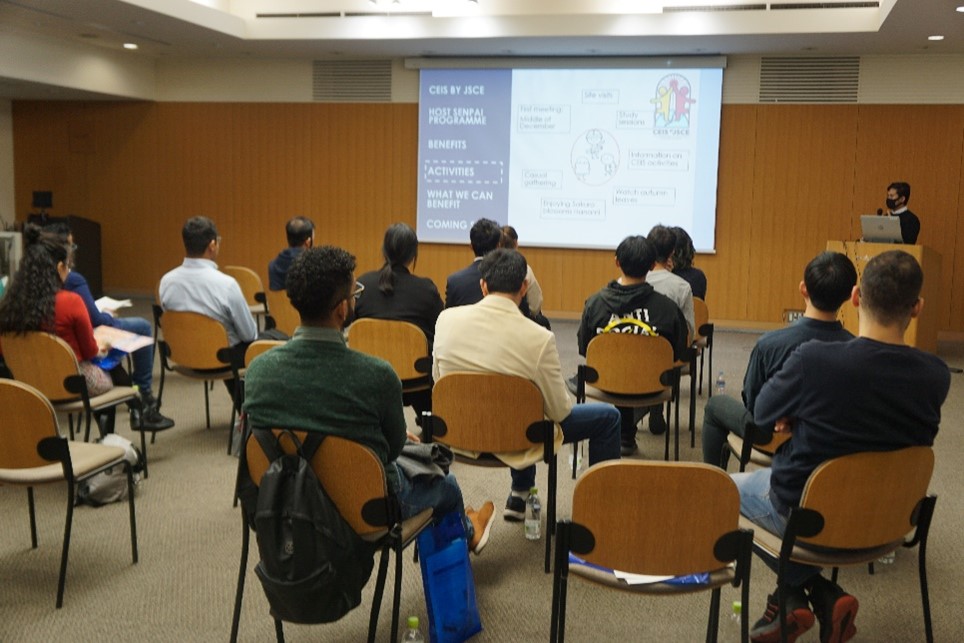
Introduction to Host Senpai Program
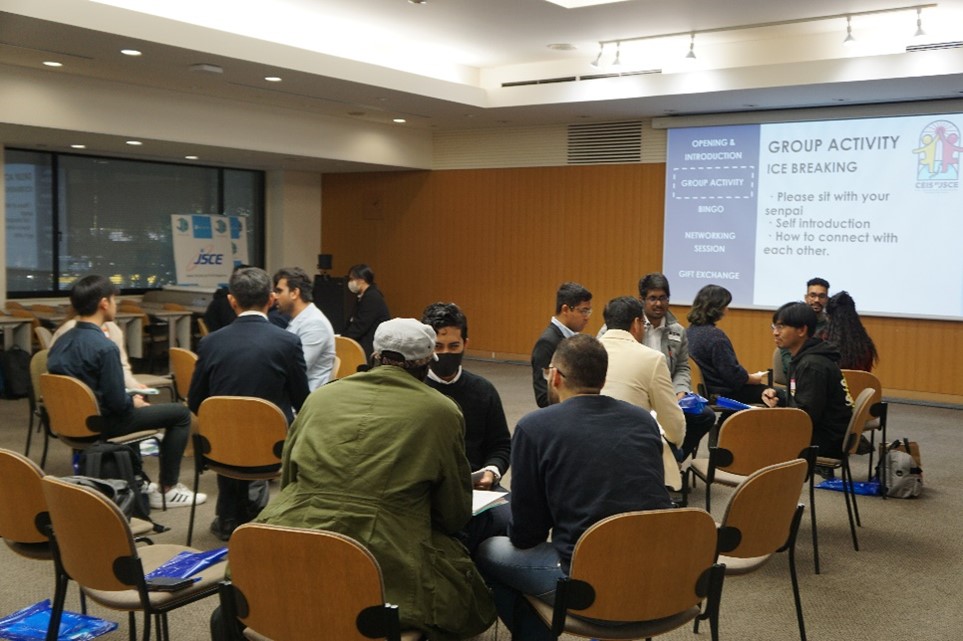
Group Activity
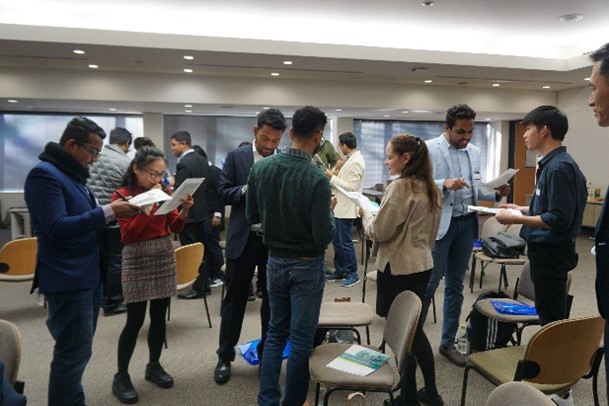
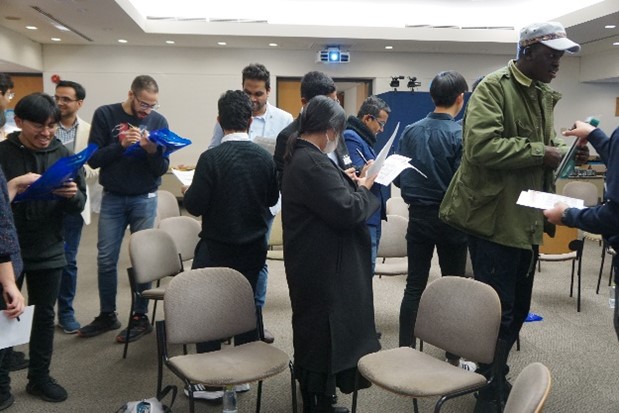
Country Bingo
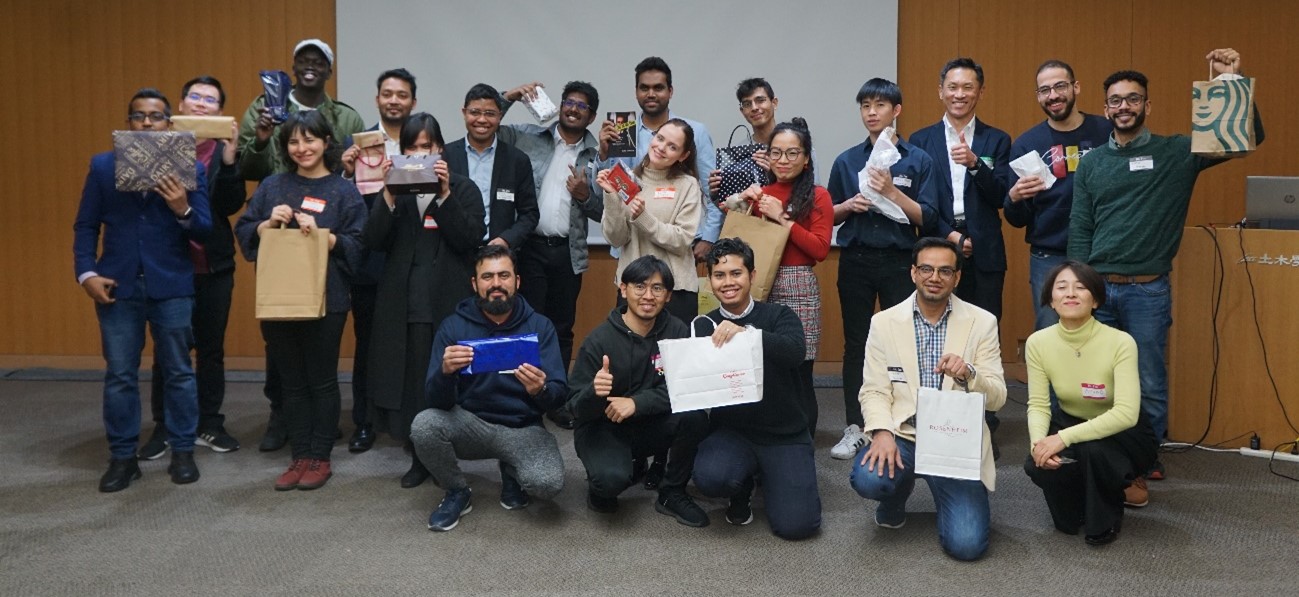
Group Photo with Gift
【Reported by Civil Engineering International Student Support Group, IAC, JSCE】
Student Subcommittee of the JSCE: Overseas plus Civil Engineering WG
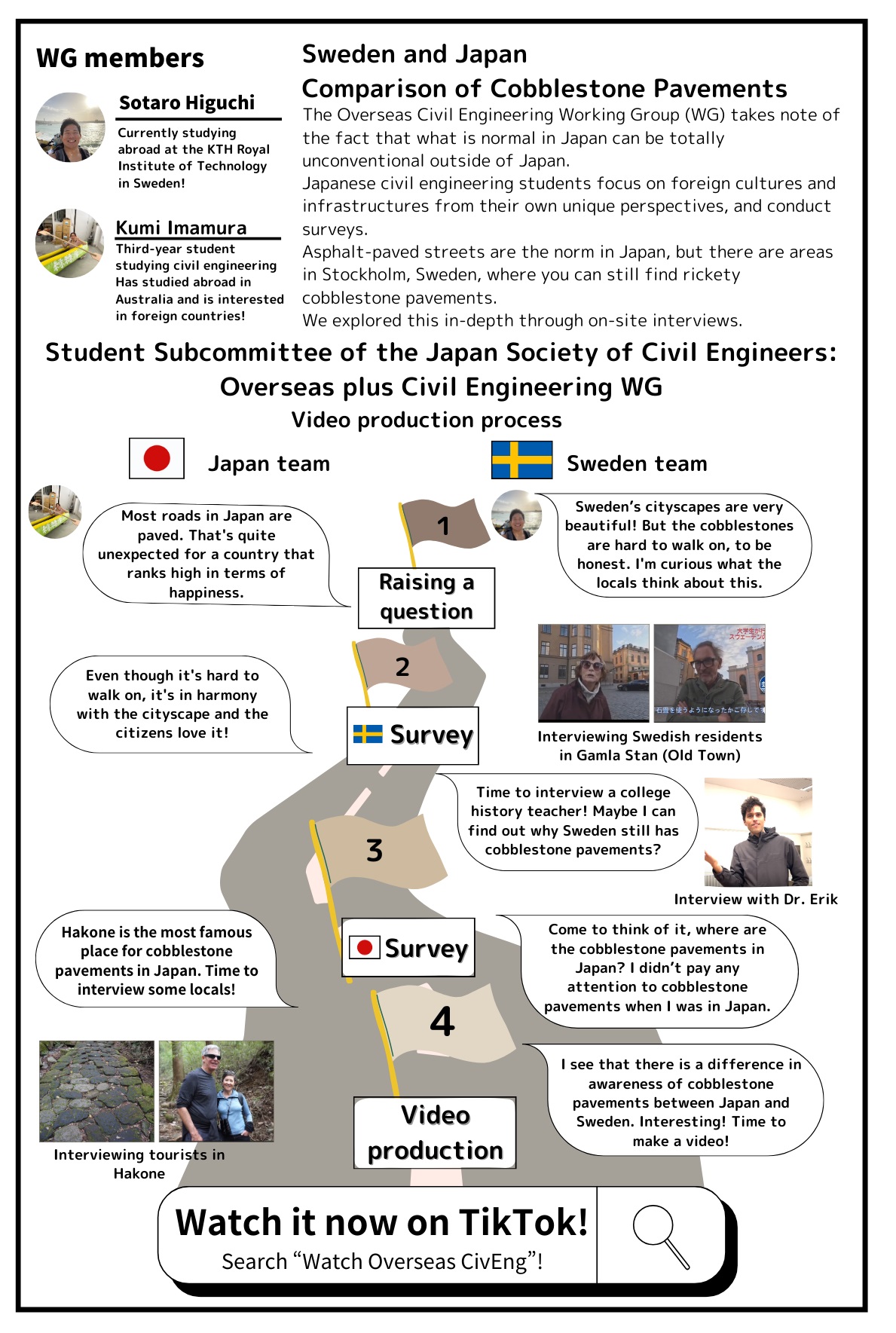
The Port of Wakkanai’s North Breakwater Dome Preventive Maintenance Project
– Maintenance to Ensure History and Culture for Future Generations –
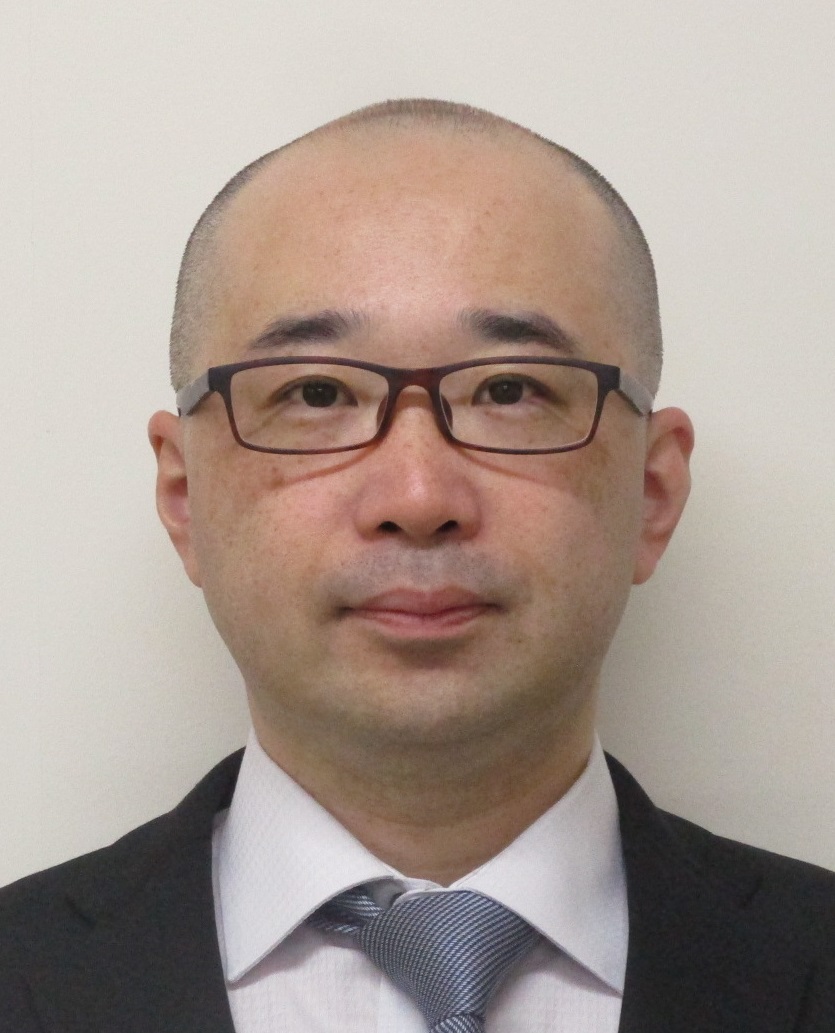 Shinobu Kurokawa
Shinobu Kurokawa
(Hokkaido Regional Development Bureau, Ministry of Land, Infrastructure, Transport and Tourism)
1. Overview
The Port of Wakkanai’s North Breakwater Dome was built in 1936, playing an extremely important role as a facility to protect people and cargo set to travel along the Wakkanai Route, which connects Hokkaido and Sakhalin, from high waves and strong winds. Nowadays, in addition to this role, the North Breakwater Dome also undertakes a new role in showcasing history and culture as a tourist facility that holds local events and is bustling with tourists, as well as a JSCE Civil Engineering Heritage Site and a Hokkaido Heritage Site. The Hokkaido Regional Development Bureau undertook full-scale renovation work to upgrade the superstructure from the footing beams for over three years from 1978, recreating the original design as it was back in 1936. Approximately 40 years has passed since the renovation work and the North Breakwater Dome has seen the reemergence of deterioration, particularly corrosion of the rebars on the outside of the arch made of concrete slabs.
The North Breakwater Dome has a unique structure and an expansive arch made of concrete slabs. As the material performance assessment and repair scope were different to that of a general port facility, developing a repair plan that met the necessary performance standards within the confines of existing knowledge proved to be challenging.
Therefore, for this project, a unique judgment criteria to ensure preventive maintenance of the North Breakwater Dome was conceived and a maintenance approach for the outside of the arched slab area was formulated, with repairs conducted based on these.
2. Forming maintenance approach using degradation map and impact of approach
In recent years, while technical standards for maintaining the reinforced concrete structures have been established, there is limited knowledge for assessing the extent of damage based on inspection results and deriving optimal measures according to that assessment, and thus establishing precise methods for conducting specific repairs has been an issue. A new concept called the “degradation map” was conceived to tackle this issue. The degradation map is an assessment of the deformation of the inspection and diagnostic scope of each area by dividing the extensive scope into grid-like areas, categorizing the state of degradation into five levels of deterioration linked to the risk of rebar corrosion.
It was possible to optimize repair costs and make appropriate repairs by establishing repair methods on an area-by-area basis not only for the current state of the facility but also for predicting the progression of future deterioration and associated performance decline, as well as implementing appropriate preventive maintenance measures in accordance with said predictions.
The impact of the approach was as follows.
1) Improved work efficiency
The degradation map turned the visual inspection deformation records into numerical data, and by plotting this data, we could understand deformation trends visually and simply across a broad spectrum.
The degradation map links the deformation with the risk of rebar corrosion, and therefore it is possible to ascertain the rebar corrosion state of materials.
2) Reduced costs
For the North Breakwater Dome, it was possible to reduce the repair costs compared to conventional reactive maintenance by drawing up a preventive maintenance repair plan using the degradation map.
3) Greater quality of maintenance
By carrying out strategic preventive maintenance with the degradation map created from the perspective of the risk of corrosion to rebars, the expenses required for inspections and repairs can be optimized, and by effectively inspecting through the simple monitoring efforts of visually inspecting the deformation, it is now possible to undertake reliable maintenance of the facility.
3. Repair approach for North Breakwater Dome
For the approach for repairing the outside of the arched slab area of the North Breakwater Dome, a construction method to remove the chloride ion and repair the rebars of the areas of degradation level three and above was selected using an area two meters by two meters as a reference in consideration of preventing cracks during making reinforcements, pour joints, and repairs, based on a preventive maintenance plan using a degradation map.
The degradation level three area was an area where the concrete was chipped away up to a depth of 5.5 cm, exceeding the chloride ion threshold concentration that initiates corrosion, and it was decided to repair the cross-section with fiber-reinforced polymer cement mortar. The degradation level four and above area was where the concrete was chipped away up to 1 cm behind the rebars (a depth of 16 cm), and it was decided to repair the cross-section with fiber-reinforced polymer cement mortar after subjecting the rebars to anti-rust treatment.
The repair work of the outside of the arched slab area was carried out from fiscal 2016 and was completed in fiscal 2022. By monitoring deformation through regular visual inspections and continuously updating the degradation map even after these repairs, appropriate maintenance is now possible and reduction in maintenance costs can be expected.
4. Infrastructure Maintenance Project Award winner
The Port of Wakkanai’s North Breakwater Dome Preventive Maintenance Project won the JSCE 2022 Infrastructure Maintenance Project Award. I would like to take this opportunity to thank all the experts who provided guidance, the consultants who conducted the surveys and design work, the construction company that undertook the construction work safely, the facility users and related parties who helped implement the project, as well as everyone connected to the project at the Ministry of Land, Infrastructure, Transport and Tourism.
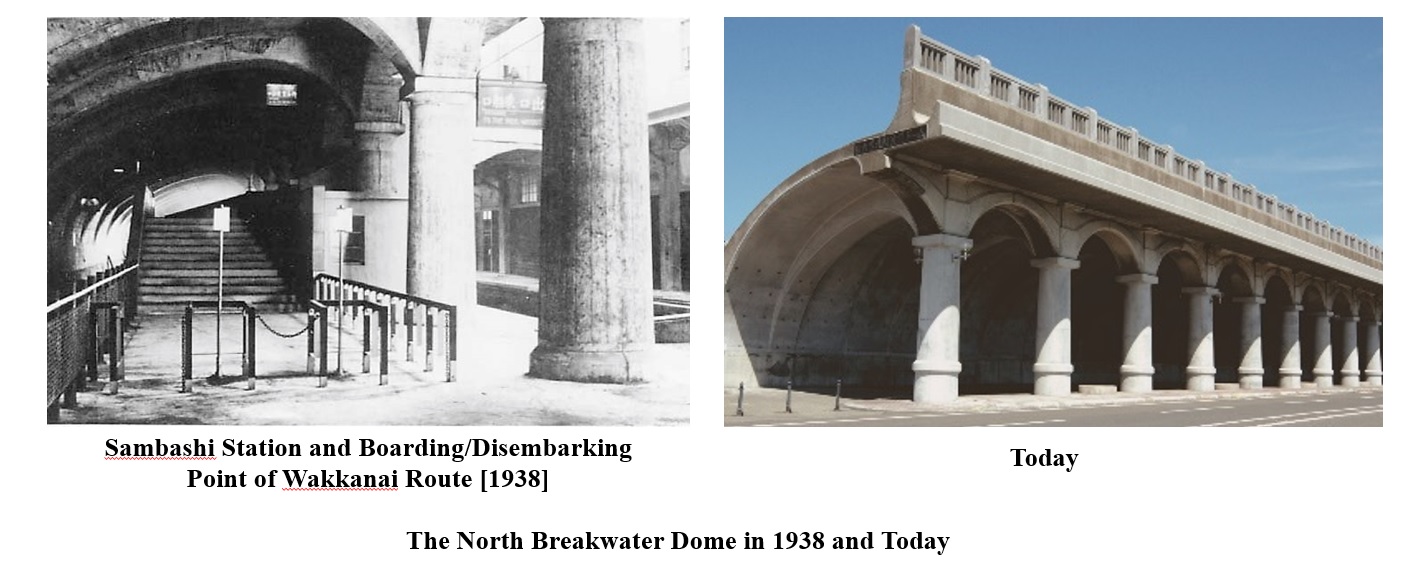
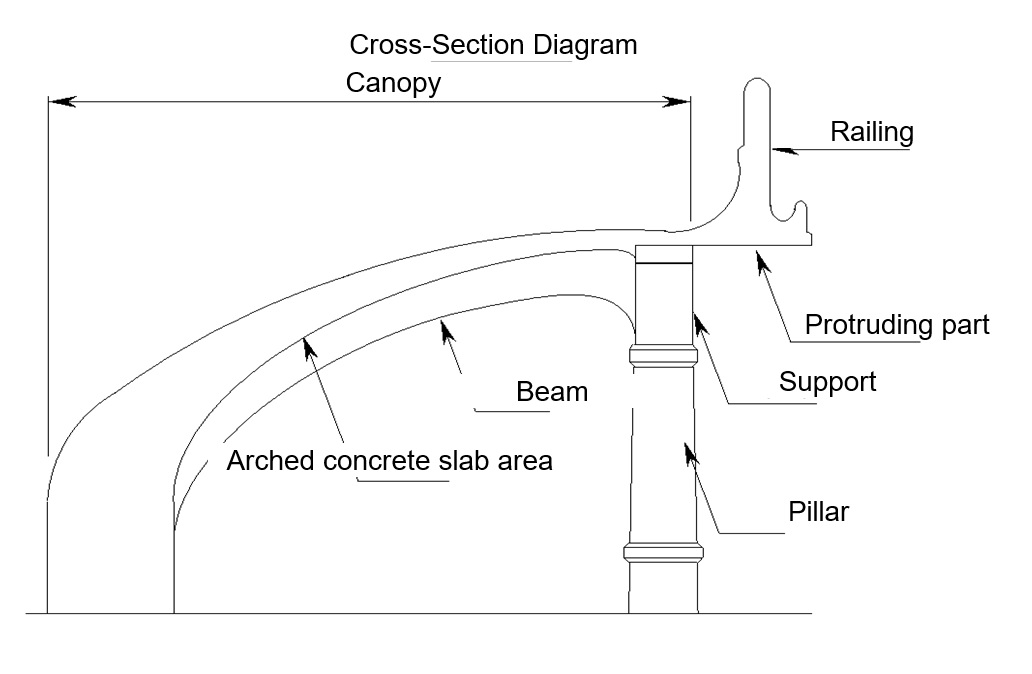
Cross-Section of North Breakwater Dome

Table 1 Categories of Degradation in Degradation Map
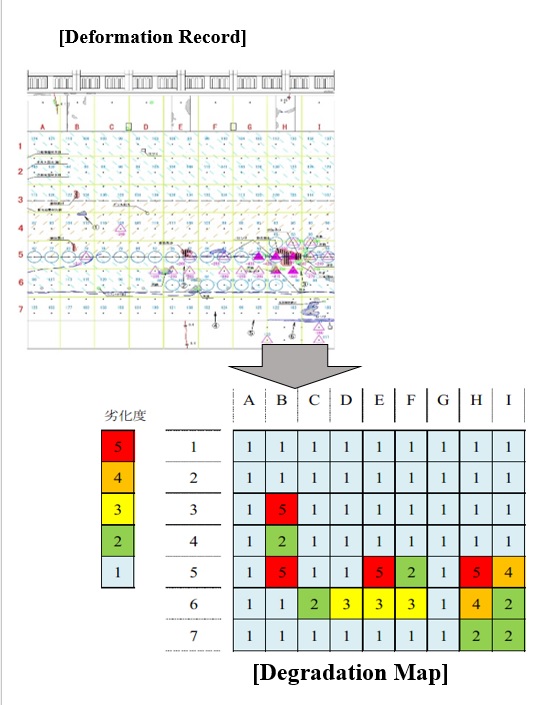
Deformation Record and Degradation Map
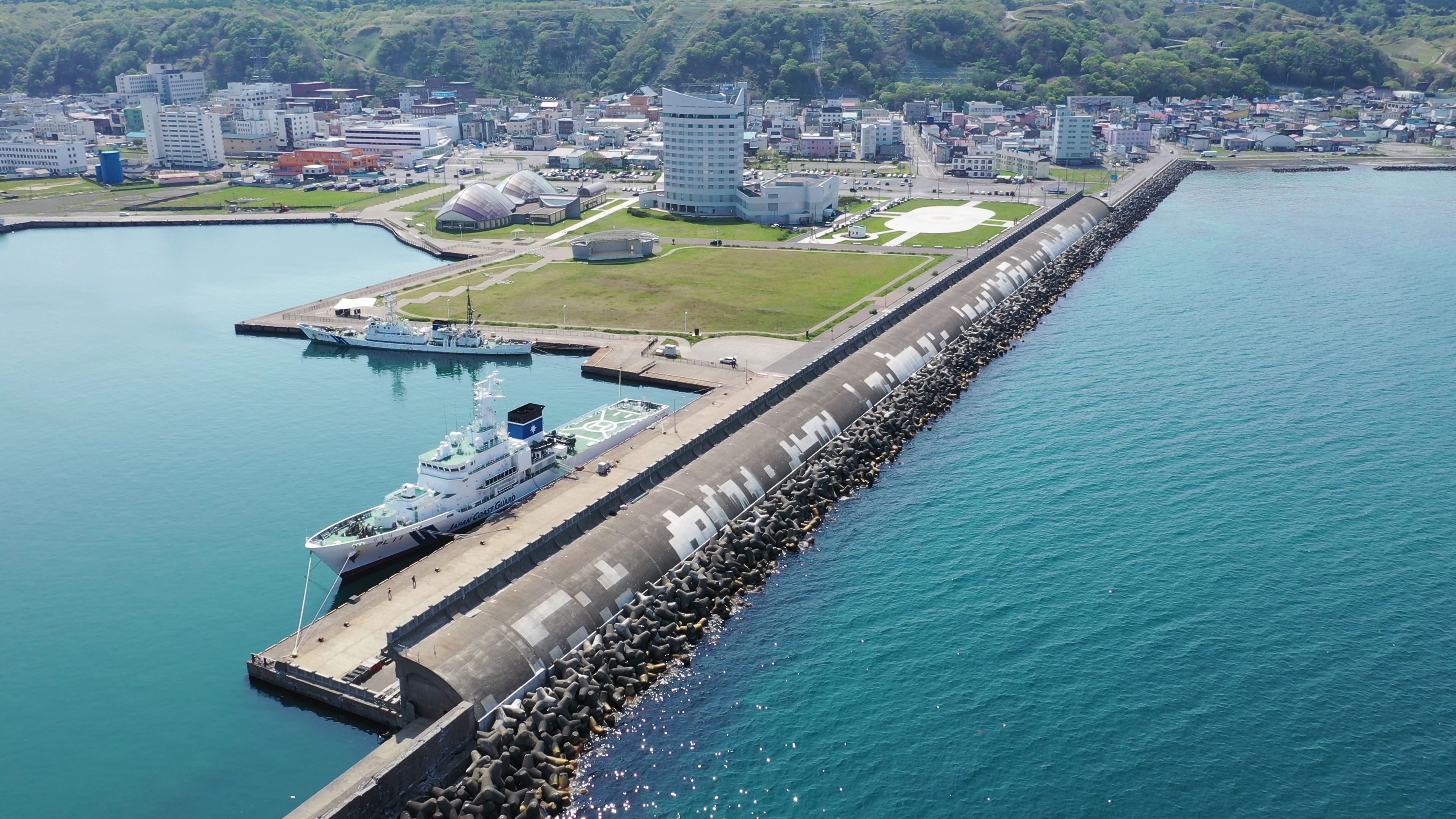
Repairs to North Breakwater Dom
【Reported by Sinobu Kurokawa, Director of Engineering Works Division, Wakkanai Port Office,
Wakkanai Development and Construction Department, Hokkaido Regional Development Bureau,
Ministry of Land, Infrastructure, Transport and Tourism】
International students visit MLIT
On September 29, 2023, the MLIT lunchtime session was held, which made possible the interaction of international students and officials of the Ministry of Land, Infrastructure, Transport and Tourism MLIT.
After 4 years of recess due to the restrictions generated by the covid pandemic, the event was successfully restarted with the participation of 11 international postgraduate students in civil engineering in Japan and 20 MLIT officers, in addition to the participation of the coordinators on behalf of Japan Infrastructure Partners (JIP), Foreign Student Office of the University of Tokyo, and the Civil Engineering International Students Support Group CEIS of JSCE.
The event kicked off with JIP taking the stage, sharing their projects in Myanmar, sparking inspiration among the attendees. This was followed by group sessions in which each student had the opportunity to hear from officers about the work done in the ministry, opening their horizons in the world of industry, and getting to know about MLIT goals, projects, and perspectives.
|
★Comments from participating students: “The most interesting part was having a chance to discuss and share experiences with MLIT. I learned a lot from the discussion and had fun.” “I found interesting that many people are working on fields which I was not aware of. I enjoyed the talk about the carbon neutral ports and learned a lot.” “I think the event was really successful. It was great to meet MLIT officials and get to know about their projects and goals. I think this helps international students to broaden their mindset in contributing to sustainable and collaborative society.” |
It was also a good opportunity for MLIT officers to learn about different cultures, as students from the Afghanistan Cambodia, Canada, India, Nepal, Pakistan, Philippines, Sri Lanka and Thailand participated. Students and MLIT officers formed small teams, delving deep into discussions that knew no bounds. The beauty of these conversations lay in their freedom; students posed questions, ranging from policy intricacies to personal experiences, and the MLIT officers, with their wisdom, responded, enriching every dialogue.
|
★Comments from participating MLIT officers: “It was a great experience for me to be able to talk with international students who are in Japan, which is something I am not able to do in my daily work.” “I thought it was great that alumni working for Japanese companies were also able to attend.” |
After the group sessions, participants enjoyed a buffet lunch, so everyone was able to continue interacting actively while enjoying a delicious Italian meal. The event concluded with commemorative photos in front of MLIT building.
For those unable to join this year, mark your calendars for the next time! This is an annual event, and a warm invitation is extended for you to be part of it next year. Your participation is sure to enhance the depth of our collective experiences.
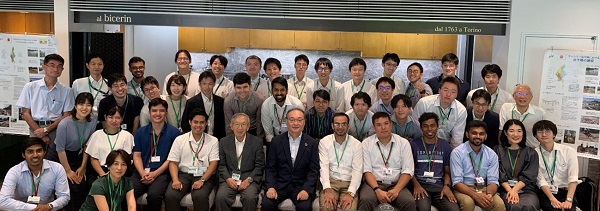
Students and officers gathered at the restaurant in the MLIT Building
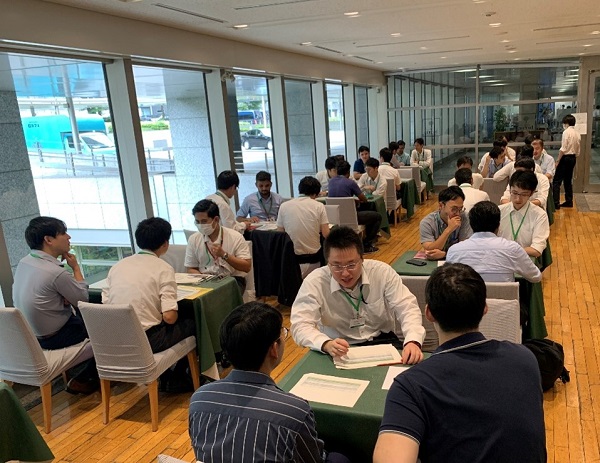
Group Session
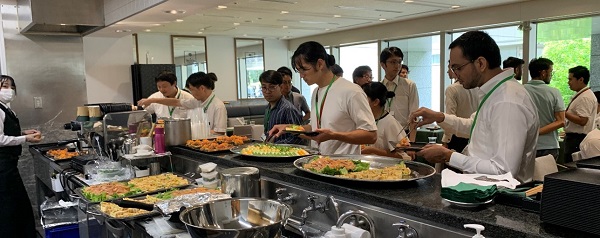
Lunch Time
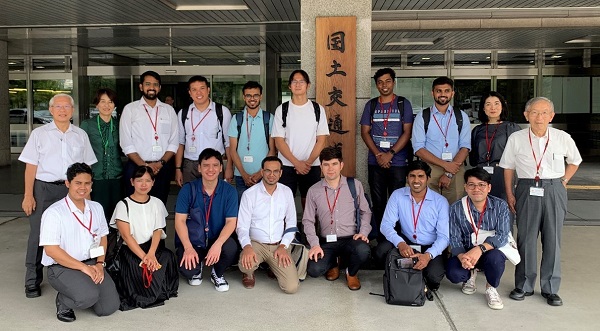
At the front of the MLIT Building
【Reported by Luisa Santa Spitia, Civil Engineering International Student Support Group, IAC】
International Symposium on Local SDGs
-Monitoring and Accelerating Actions towards the 2030 Agenda
The United Nations Centre for Regional Development (UNCRD), in collaboration with the Central Japan SDGs Platform, organized the "International Symposium on Local SDGs -Monitoring and Accelerating Actions towards the 2030 Agenda." This event was funded by a grant from the Japan Society of Civil Engineers (JSCE) Academic Exchange Fund, a public trust.
While the SDGs are being mainstreamed in urban and regional development in countries around the world, the SDGs have been incorporated into regional development strategies in Japan and are being actively promoted, but it is said that the progress have been delayed due to the impact of the new coronavirus epidemic and Russia's invasion of Ukraine. In order to further accelerate efforts to achieve the SDGs by 2030, it is necessary to objectively grasp various issues, review existing measures, and formulate new measures. In the context of this situation, we held an international symposium with the aim of sharing with Asian cities the efforts being made at the local level in Japan to accelerate smart city and the SDGs.
The first half of the event featured lectures by Professor Shun Kawakubo, Faculty of Engineering and Design Department of Architecture, Hosei University, and Ms. Bernadia Irawati Tjandradewi, Secretary General, United Cities and Local Governments Asia Pacific (UCLG-ASPAC), on the latest domestic and international trends regarding local SDGs. Prof. Kawakubo gave an overview of the dissemination of the SDGs in Japan, explained the relationship between goals and targets and the use of indicators, and introduced two platforms on the SDGs operated by the Kawakubo Lab, "Local SDGs Platform" and "Platform Clover". In addition, Ms. Tjandradewi, Secretary General of UCLG-ASPAC as a global task force, gave a lecture on the status of SDG implementation in the Asia-Pacific and the monitoring and review mechanisms necessary to achieve the SDGs at the local level. She also introduced the support measures that UCLG is implementing for local governments to achieve the SDGs, especially the Voluntary Local Review (VLR) guidelines.
The second half of the event featured case studies presented by UNCRD and local governments. UNCRD presented the SDG monitoring tools for local governments, which are being developed jointly with municipalities in Aichi Prefecture and private companies since 2020, and "HALFWAY TO 2030" report, which is being written by an editorial board led by UNCRD. Presentations were then made by Toyota City and Gamagori City in Aichi Prefecture, and Penang Island City in Malaysia on SDG initiatives being implemented in each municipality.
64 participants, including three mayors and one deputy mayor, from more than 20 cities in 11 countries participated in the symposium and share knowledge and experiences, then an exchange meeting was also held after the symposium to build a worldwide network.
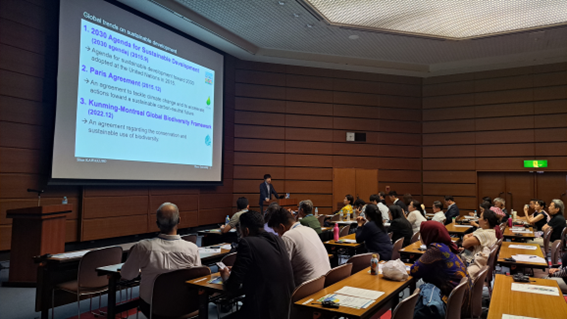
International Symposium on Local SDGs
【Reported by The United Nations Centre for Regional Development (UNCRD)】
Joint Seminar on Fly Ash and Blast Furnace Slag Blended Cement Concrete
- Research, Specifications and Applications in Thailand, Indonesia and Japan -
Joint Seminar on Fly Ash and Blast Furnace Slag Blended Cement Concrete - Research, Specifications and Applications in Thailand, Indonesia and Japan - was held on September 28th, 2023. This joint seminar was organized by JSCE Concrete Committee with co-organization from Indonesian Society of Civil and Structural Engineers (HAKI), Engineering Institute of Thailand (EIT), and Sirindhorn International Institute of Technology (SIIT), Thammasat University, Thailand. JSCE have organized two joint seminars on the related topics with our Indonesian counterparts in 2019 and 2021, respectively. JSCE is also keeping close collaboration with researchers in Thailand on the application and research of fly ash and slag. Sharing common issues on promoting low-carbon and high durable concrete materials by using fly ash and slag, this joint seminar was aimed to strengthen academic and industrial communication among civil engineers and researchers from the three countries. The seminar was in hybrid form with most of the speakers and participants attending online, and a venue was prepared in SIIT, Thammasat University for some speakers and participants attending on site. The presenters and their presentation titles of this seminar are shown in Table 1.
Thailand and Indonesia are undergoing fast economic growth, leading to high demands for infrastructure development. Meanwhile, the global carbon neutrality consensus in recent years brings new challenges to concrete and construction industries towards low-carbon concrete materials. It is highly valuable that JSCE could share the experience and recent advances in Japan with our counterparts of Thailand and Indonesia in the application of fly ash and slag in concrete. It is also important for Japanese researchers and engineers to learn about the recent research advances and practices in Thailand and Indonesia for the sake of further improvement of technologies and international communication in Japan.
In the seminar, two presenters from Japan, three speakers from Indonesia, and two speakers from Thailand, made their presentations on the topic from academic or industrial viewpoints. Dr. Warangkana Saengsoy, SIIT, Thammasat University, Thailand, introduced their recent research progress on the utilization of fly ash off specifications in concrete, indicating that many off-spec fly ashes have high potential for use in concrete so more studies on them should be carried out. Dr. Januarti Jaya Ekaputri, Sepuluh Nopember Institute of Technology (ITS), Indonesia, introduced their study progress of high-volume fly ash concrete in marine environment including both tidal and immersion, particularly strength development and chloride penetration. In addition, she introduced the current research on geopolymer made from fly ash and sea water, showing the potential of geopolymers to be utilized in marine environment. Dr. Takeshi Torichigai, Kajima Corporation, Japan, is working on development of ecological and green concrete and their application in practical projects. In his presentation, the application of fly ash cement concrete in dam construction in Japan was introduced, raising the quality control issues faced in the practical construction and the solutions. Mr. Yohans Sunarno is the operation director of PT Bosowa Beton Indonesia, Indonesia. He introduced the current condition of fly ash sources in Indonesia and their effects for improving performance and cost efficiency in fly ash concrete production. Mr. Sakkarin Luangkamchorn works in The Concrete Products and Aggregate Co., Ltd., Thailand. He introduced practical application of fly ash concrete, highlighting the projects of high-volume fly ash concrete used for high-rise building foundations for thermal cracking control. Dr. Takeshi Yamamoto, Central Research Institute of Electric Power Industry, Japan, introduced the development of a rapid assessment method for pozzolanic activity of fly ash (API method), which will be included in JIS A 6201. Dr. Ivan Sandi Darma, Institut Teknologi Bandung, Indonesia, induced their studies on microstructures of slag and fly ash blended cement concrete using X-ray computed tomography (X-ray CT) technologies as well as examples with the combination of superabsorbent polymer.
The joint seminar gained a lot of attentions from Japan, Thailand, and Indonesia. More than 200 participants from universities, institutes, and construction companies attended the seminar via Zoom or on site. The participants expressed great interest in the presented topics. In the Q&A session, a lot of questions were asked ranging from material compositions, property test, quality control, and cost and manufacturing, with warm discussions with the speakers. It can be said that the joint seminar is successful. More and deeper technical communications are expected in the future.
Table 1 Speakers and their presentation titles
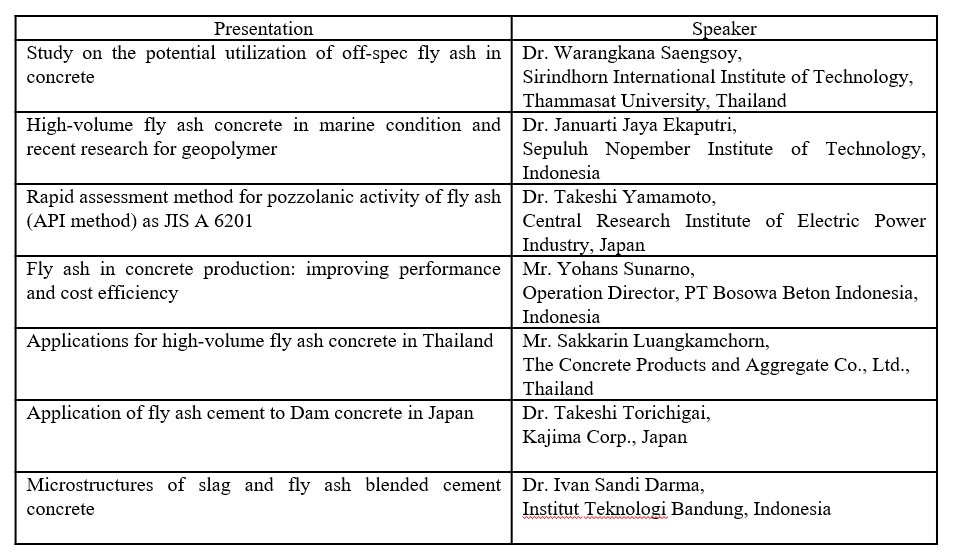
Moderator: Dr. Shingo Asamoto (Saitama University, Japan)

SIIT, Thammasat University

Online Speakers of Joint Semina
【Reported by Concrete Committee, JSCE】
Updates
◆In response to 2024 Noto Peninsula Earthquake
https://www.jsce-int.org/node/873
◆The International Infrastructure Archives
– A Compilation of Japan’s Greatest Projects in Transfer of Civil Engineering Technology in Service –
http://www.jsce.or.jp/e/archive/
◆Infrastructure System Resilience: An Engineering Framework for Assessment, Management, and Governance
https://ascelibrary.org/doi/10.1061/9780784485088
◆ IAC “News Pick Up!!” on the JSCE Japanese website
https://committees.jsce.or.jp/kokusai/iac_dayori_2024
◆【YouTube】 Civil Engineering, in Your own Words (Full ver.)
https://youtu.be/r1Dc37kABXM?feature=shared
◆JSCE Concrete Committee International Newsletter No. 70
http://www.jsce.or.jp/committee/concrete/e/newsletter/newsletter70/index...
◆2023 Civil Engineering Design Prize, JSCE
http://design-prize.sakura.ne.jp/
◆Summary of featured articles in JSCE Magazine Vol. 109, No.2, February 2024
http://www.jsce-int.org/pub/magazine
◆Journal of JSCE
https://www.jstage.jst.go.jp/browse/journalofjsce
◆Safe and Healthy Work in the Digital Age 2023-2025 Campaign
https://healthy-workplaces.osha.europa.eu/en/media-centre/events/launch-...
◆【YouTube】 Taiwan Public Infrastructure Archives: Public Water Supply Series
https://youtu.be/mMMvODevd_Q?feature=shared
◆CECAR10:http://www.cecar10.org/
◆ACECC Future Leaders Group (FLG) September Newsletter
https://drive.google.com/file/d/1IXG5SJs9Sv37NVAwVYI0EoEV60W5-Bdl/view?u...
Subscription
The IAC News is one of the communication tools to share information and ideas with the members. We would like to invite you, your friends and colleagues to join the communication and to subscribe the IAC News. Please register online: (http://www.jsce-int.org/node/150). We look forward to meeting you.
